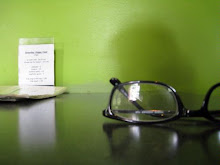Dennis as Santa in Governor John Y. Brown's Inauguration Parade 1979
Dennis asked a friend of ours Regina Mudd to make the suit and she got the fabric and fake white fur at Behr's, a big now closed, fabric store in downtown Louisville. He ordered a nice beard, wig and boots from Caufield's and she custom made a beautiful red velveteen Santa suit with fur trim.
On Inauguration Day Dennis and Regina went to the event. He was in the parade and she was taking pictures. I was working and took a small television to work so everyone could watch parts of the parade between working. They got to go to the Governor's mansion for a private after party and he handed out gifts to those attending and got to stand with the new Governor and his wife Phyllis George Brown. He told me the Governor had his hand on her ass as she was speaking at the microphone!
The appearance was quite the success and the next year we put an ad in the Courier-Journal advertising that Santa could attend your Christmas party for a small fee. This ran Thanksgiving and the next Sunday after that. I was the booking agent and kept his calendar and was his driver. Then almost every day after work Santa and I headed out with a carefully plotted route to visit private homes.
Santa always took a candy cane for every child. He would ask the children if they knew how to sing "Rudolf the Red Nosed Reindeer". Then he would lead them in a group sing. If he wasn't delivering gifts that night, he would have each child sit on his lap and ask them what they wanted for Christmas. The time he spent in the home was about 15 to 30 minutes and if he took longer I'd say, "We have to get to the next stop!" Sometimes he said they wouldn't let Santa leave!
The first year we did this we made about $300 at $15 for each visit. It was enough to buy Christmas presents and we both really enjoyed it. We were either paid in advance by a mailed check or someone followed Santa out and handed him the fee. Tips were not unusual! Only once did someone refuse to pay. It was a woman who lived in a very nice part of town. Dennis went in and did the whole routine. When he left she followed him and told him she was not paying him. He was hurt. He told me, "I told her that she was wrong to stiff Santa." We figured if she needed that $15 enough to do that she could keep it!
A friend of his was a photographer and he wanted Dennis to work at his studio two Saturdays being Santa for family photos. In trade for this he took pictures of Dennis as Santa. We used one on a post card which we mailed in late November each year to remind those who had hired him the previous year that it was time to book a visit for the following month! We developed a regular following this way.
The third year we got a big corporation party at a private home in the rich part of town and they paid Dennis $100. Those people had him back every year and every year they paid a bit more. He had several business parties with bigh crowds. This went on for a decade.
Dennis died December 5, 1991. We had stopped using a newspaper ad years before but lots of repeat visits were already lined up. His Santa suit was at the cleaners and a beautician friend has his wig and beard, getting it ready to go. I had to call those expecting visits again that year and tell them Santa was gone.
I was married to Santa for twenty-one years and was his agent and driver for ten. What a wonderful life.



